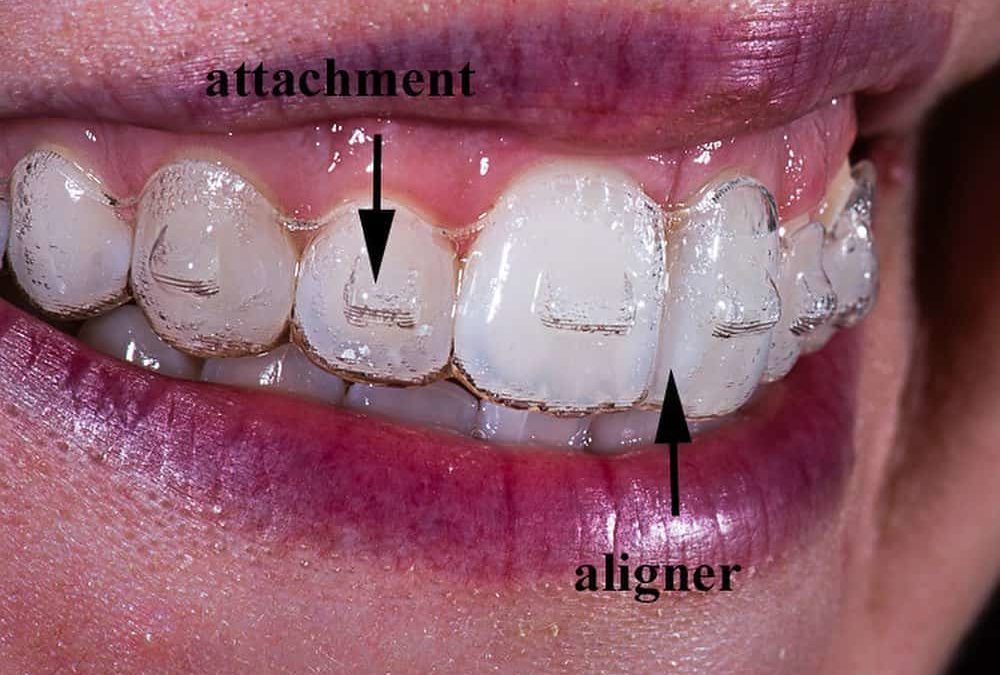What to Anticipate Throughout Your Invisalign Journey: A Comprehensive Review
What to Anticipate Throughout Your Invisalign Journey: A Comprehensive Review
Blog Article
Invisalign vs. Standard Braces: Which Option Is Right for You?
When considering orthodontic therapy, the choice between Invisalign and standard dental braces provides several crucial variables that merit careful examination. Invisalign provides a very discreet choice with detachable aligners, while typical dental braces provide a much more noticeable yet reliable remedy for extreme imbalance.
Review of Treatment Options

On the other hand, standard dental braces contain metal braces and cords that are bonded to the teeth. This technique uses continual pressure gradually to attain placement. While effective for complicated orthodontic problems, typical braces require routine visits for modifications and can present obstacles in maintaining oral hygiene because of the problem of cleansing about braces and cords.
Both alternatives have their benefits, and the choice frequently depends upon certain dental conditions, way of life preferences, and client compliance. Ultimately, seeking advice from an orthodontic expert is vital for determining one of the most ideal therapy strategy tailored to individual needs. Comprehending the nuances of each alternative can significantly affect the total success of orthodontic therapy.
Aesthetic Factors To Consider
A substantial variable affecting the option between Invisalign and typical dental braces is the aesthetic appeal each therapy uses. Invisalign aligners are crafted from clear plastic, making them essentially unnoticeable when worn. This very discreet look is especially interesting grownups and teens that may feel uneasy concerning their orthodontic treatment. The ability to keep an all-natural smile throughout the positioning process can considerably improve the person's self-confidence in social and specialist setups.
On the other hand, conventional dental braces contain metal braces and wires, which can be much more recognizable. While developments in orthodontic innovation have actually led to the advancement of smaller sized brackets and colored elastics, standard dental braces still keep a more noticeable profile. For some people, the presence of dental braces may discourage them from looking for essential treatment.
Eventually, the option in between Invisalign and traditional braces may pivot on individual choices regarding appearances. Patients who prioritize discretion frequently lean toward Invisalign, while those who are less concerned regarding exposure may select typical dental braces. Understanding the aesthetic implications of each option is important for making a notified choice that lines up with one's way of life and preferences.
Comfort and Convenience

In terms of comfort, Invisalign aligners are detachable, allowing individuals to enjoy their preferred foods without restriction and maintain optimum oral hygiene. Cleaning and flossing are streamlined, as the aligners can be gotten throughout these regimens, whereas standard braces call for cautious maneuvering around braces and wires.
Additionally, Invisalign's dynamic system enables less orthodontic sees. Clients usually get multiple collections of aligners at the same time, which can simplify the treatment procedure and decrease time spent in the orthodontist's chair. On the have a peek at this site other hand, standard dental braces require regular modifications, making them less practical for those with active routines. Invisalign. On the whole, the comfort and ease of Invisalign make it an attractive selection for numerous people seeking orthodontic treatment.
Therapy Period and Effectiveness
While both Invisalign and standard dental braces work in fixing dental imbalances, the duration of treatment can differ substantially in between both options. Typically, Invisalign treatment can take anywhere from 12 to 18 months, depending upon the complexity of the situation. The clear aligners function by progressively shifting teeth into their desired positions, and routine follow-ups with an orthodontist assistance make sure progress remains on the right track.
On the other hand, standard dental braces usually call for a longer dedication, generally varying from 18 months to 3 years. This results from their set nature and using braces and cables, which can be much more efficient for serious misalignments and complex cases (Invisalign). The therapy efficiency of conventional braces is well-documented, as they allow for precise adjustments and better control over tooth activity
Inevitably, the option between Invisalign and conventional braces may hinge on both the anticipated therapy duration and the details oral problems available. Consulting with an orthodontist is important, as they can offer tailored recommendations based on individual needs, making sure the selected method aligns with desired timeframes and results.
Cost Contrast and Insurance Alternatives
Expense plays a considerable role in the decision-making process for individuals considering orthodontic treatment, whether going with Invisalign or standard braces. Usually, the cost of Invisalign arrays from $3,000 to $8,000, while standard braces typically set you back between $2,000 and $6,000. Variables influencing these prices include the intricacy of the case, the period of treatment, and geographical place.
Insurance protection can considerably influence out-of-pocket expenses. Lots of dental insurance coverage plans supply partial coverage for orthodontic treatments, yet the specifics can vary commonly. It is essential for people to evaluate their insurance coverage to figure out the level of protection for either alternative. Typically, typical braces may be more often covered by insurance policy strategies contrasted to Invisalign, which some insurance companies classify as an aesthetic treatment.
Additionally, a number of orthodontic techniques offer flexible payment plans, making both treatment options much more easily accessible. Patients need to ask concerning potential financing options and discounts for upfront repayments. Reviewing the complete cost, consisting of insurance benefits and layaway plan, is important for making a notified decision that aligns with both visual choices and budget plan considerations.

Final Thought
In summary, the option between Invisalign and traditional dental braces rests on numerous aspects, consisting of visual preferences, comfort, therapy period, and expense. Invisalign provides a discreet, removable choice that helps with dental hygiene and dietary versatility, while conventional dental braces may be better for intricate dental concerns and often come with a reduced rate point. Ultimately, appointment with an orthodontist is crucial to evaluate private circumstances and establish the most suitable treatment choice for attaining ideal about his dental placement.
When considering orthodontic therapy, the option in between Invisalign and traditional braces provides numerous essential factors that merit mindful examination.Contrasting Invisalign and conventional dental braces reveals distinct treatment choices for orthodontic modification.While both Invisalign and traditional dental braces are reliable in dealing with oral imbalances, the duration of therapy can vary considerably in between the 2 alternatives.Cost plays a substantial role in the decision-making procedure for individuals considering orthodontic treatment, whether choosing for Invisalign or typical braces.In web link summary, the option between Invisalign and traditional dental braces pivots on multiple factors, consisting of visual choices, convenience, treatment duration, and price.
Report this page